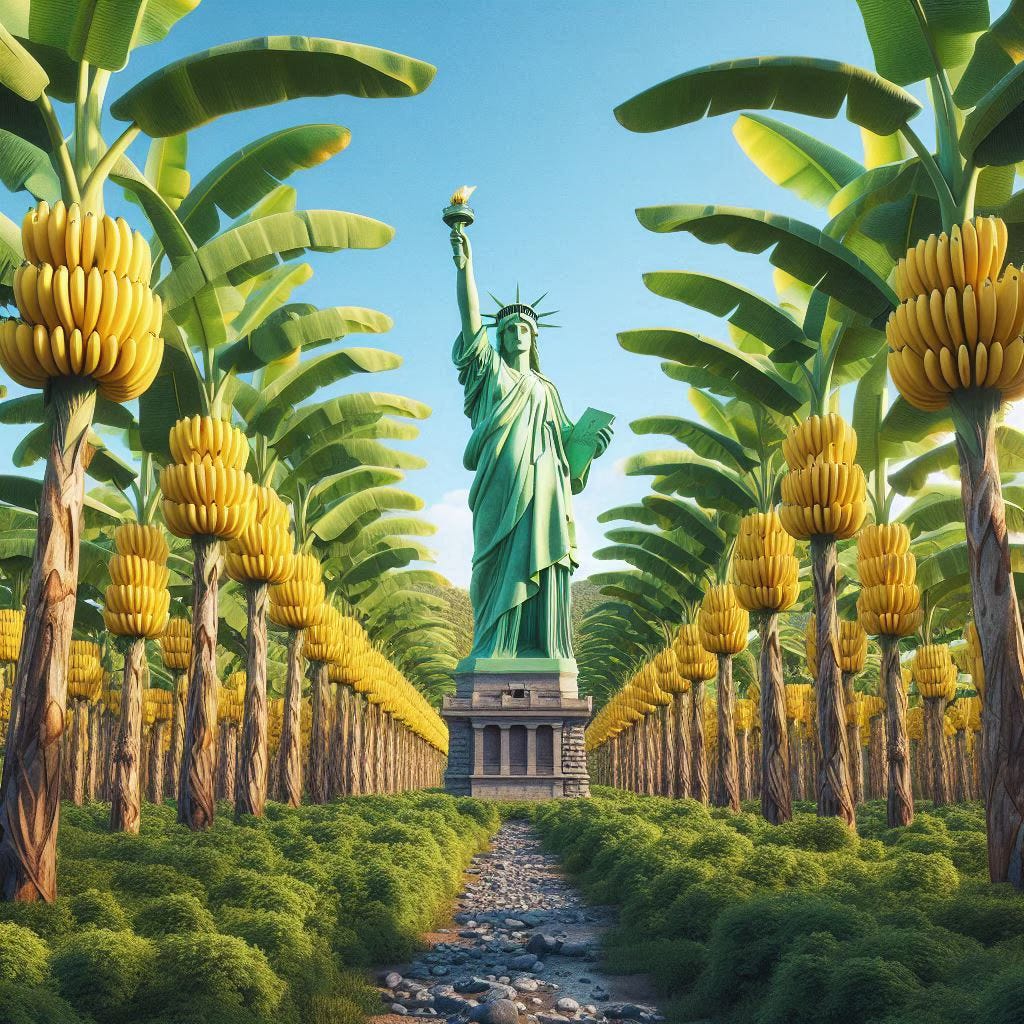Our new banana republic
Who knew we'd spend 2025 obsessing over tariffs?
I didn’t expect to spend 2025 obsessing over tariffs. I expect you didn’t either. The good news is that there’s an audience for what we’ve learned: tariffs are suddenly a hot topic on social media.
People are paying attention, particularly since more than $6 trillion in market wealth vanished after the White House tariffpalooza last week. Treasury Secretary Scott Bessent says Americans “don’t look at the day-to-day fluctuations” of the stock market. That’s ordinarily true — until the market crashes, and then everyone starts watching.
Thanks for being part of the Now It’s History community. It’s with readers in mind that I’ve had the pleasure of diving into past moments when trade rose to the top of the American agenda.
Now that President Donald Trump has imposed huge tariffs on imports to the U.S., some of my recent posts may help answer your questions and illuminate what’s happening now. I’ll share those links below.
But first: What is a tariff?
The dictionary defini…
Keep reading with a 7-day free trial
Subscribe to Now It's History to keep reading this post and get 7 days of free access to the full post archives.



